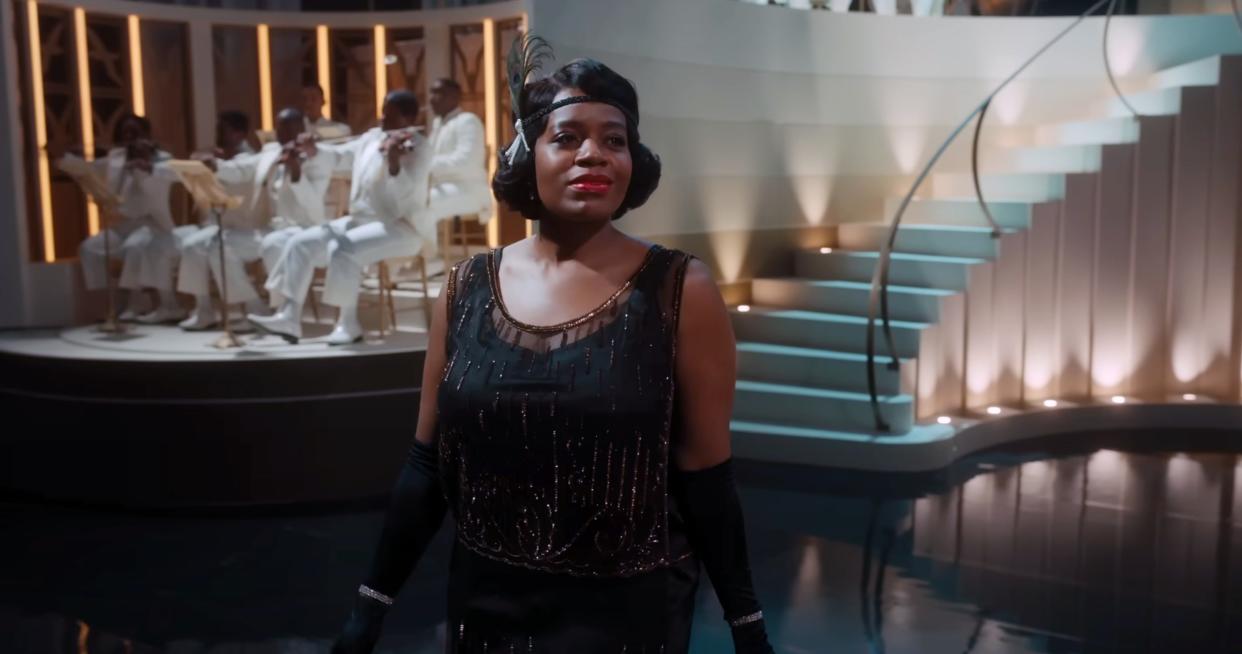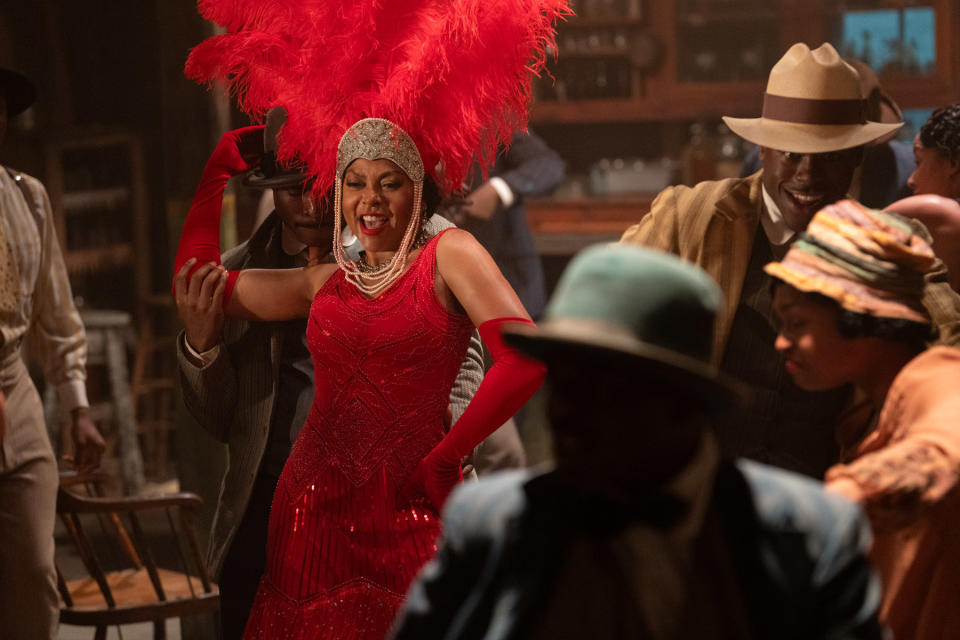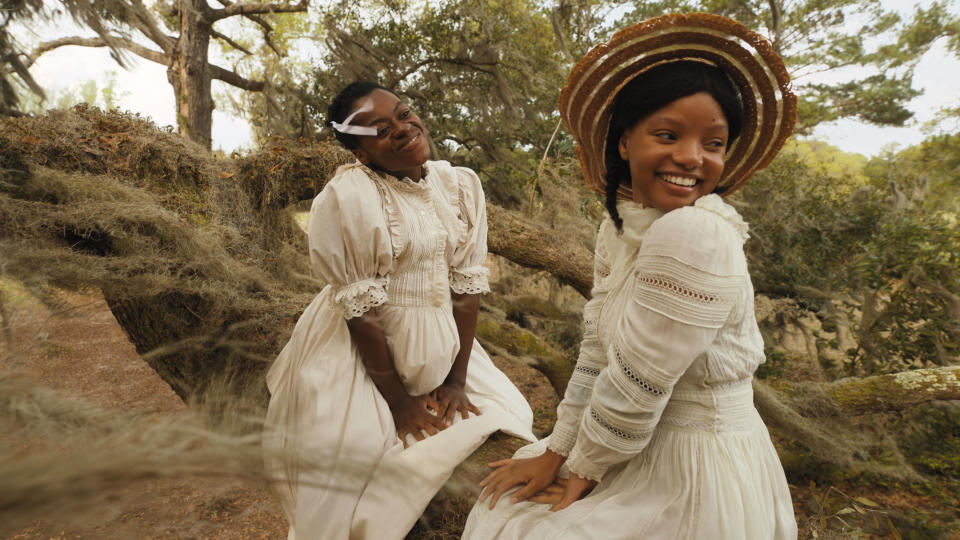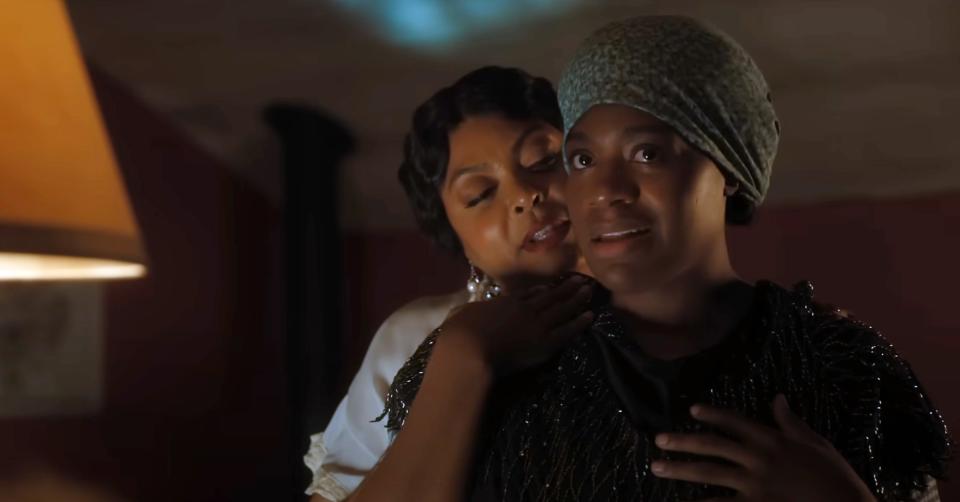‘The Color Purple’ Musical Required Close Collaboration Between Costumes and Choreography

Nearly 40 years ago, costume designer Francine Jamison-Tanchuck worked as a wardrobe supervisor on Steven Spielberg‘s “The Color Purple,” collaborating with mentor Aggie Guerard Rodgers on a film that would ultimately become a classic. “My job was to clothe a lot of the background ladies and day players and assist Aggie in the fittings,” Jamison-Tanchuck told IndieWire. “It was Whoopi Goldberg’s first major film, and Oprah Winfrey‘s, and the two of them were just incredible. And of course Steven’s directing, and Quincy Jones’ music — how can you go wrong? There are such fun memories from working on that film.”
When director Blitz Bazawule called Jamison-Tanchuck to ask if she would create costumes for a new movie of “The Color Purple” adapted from the Tony-winning musical, she jumped at the chance. “I thought, what an extraordinary opportunity to come full circle,” she said. “I thought it was such an honor.” One of the designer’s first calls was to Rodgers to get her blessing for a particular piece of costuming Jamison-Tanchuck wanted to reprise from the original film. “I wanted to borrow her idea of the pearls going around Shug Avery’s headdress, and she said, ‘Oh honey, go for it!'”
More from IndieWire

Like Jamison-Tanchuck, choreographer Fatima Robinson felt deep affection for the 1985 film. “Every year I watch ‘The Color Purple’ and every time I cry,” Robinson told IndieWire. “I have two younger sisters, and it was the first time my mom came home and said, ‘I have to take you to see this movie.’ I remember how much love I felt for and from my sisters watching it, and to this day, when my sister and I send each other emoji hands we’re doing the patty cake from that movie.” Those memories informed some of Robinson’s initial conversations with Bazawule. “We talked a lot about women’s empowerment and sisterhood, and about how to honor the legacy of the original movie — and how do we add on to that?”
Like Robinson, Jamison-Tanchuck wanted to pay tribute to the original film but also wanted to go in new directions to make the story feel fresh. “Blitz and I felt that because it is a musical we could be bolder with some of the colors and styles,” she said, adding that fidelity to the early 20th-century period was still important. “I love history, and I love research. It’s extraordinary the things you find out. I was surprised to learn that in the early to mid-1920s performers were practically naked in some of the outfits they were wearing! I didn’t think it was a far reach to design Shug Avery’s outfit for the juke joint to be a little more structured rather than the sackiness we associate with the ’20s.”
Jamison-Tanchuck and Robinson collaborated closely to make sure that the costumes would accommodate the movements Robinson and Bazawule envisioned for the cast, not only in the musical numbers but even in dramatic moments; in an effort to create a seamless flow between the non-musical scenes and the song-and-dance numbers, Bazawule had Robinson work with him to choreograph the blocking throughout the movie. “From day one, I told Fatima, ‘I want a ballet between all the moments, whether they’re dialogue or musical,'” Bazawule said. “So Fatima’s helping me in long dialogue scenes — sometimes three, four pages — to figure out how to move characters across the room.”
According to Robinson, the process was extremely organic, with a give and take between her, the cinematographer, the production designer, Jamison-Tanchuck, and the actors that Bazawule enabled via thorough planning. “Blitz storyboarded the whole movie, but he did it in a pre-viz,” Robinson said, noting that she was able to shoot videos with a skeleton crew that Bazawule would then incorporate into the increasingly elaborate video storyboards. “Then we gave those videos to every department, and everyone was able to understand how to build what they did around the dance. It gave the core team an understanding of what we were doing and how we needed to shoot it so that we could capture it in the best way possible.”
Jamison-Tanchuck relied heavily on Robinson’s videos to make sure her costumes would serve not only her historical and dramatic intentions but also the needs of the actors who had to dance in them. “I was able to watch a lot of the rehearsals, and they inspired me to have the costumes built in a way that would allow the actors to move freely without feeling restricted,” Jamison-Tanchuck said. “The fact that it was a musical was constantly at the forefront of my mind.” Robinson spent as much time as possible with the costume department, making sure Jamison-Tanchuck and her team were aware of which performers would be executing the most dynamic dance moves. “I was constantly walking over there to tell them which dancers were flipping and tumbling so they could add extra gussets, because a lot of these clothes are vintage and they rip easily.”

For both Robinson and Jamison-Tanchuck, the guiding principle throughout the film was to make sure their work would express the emotional arcs of the characters. Jamison-Tanchuck’s work for Celie (Fantasia Barrino), for example, traces each stage in the heroine’s development through subtle shifts in color and style. “When Celie was younger, I wanted her costumes to be a little bit livelier in some ways, to show that she still had the love of her mother and her sister,” Jamison-Tanchuck said. “But as time goes on, she’s dealing with abuse, and I didn’t think it was proper for the costumes to be bright. I wanted them to show that she didn’t really have a lot of input in what clothing she was wearing.”
As Celie’s life grows more oppressive under her abusive husband Mister (Colman Domingo), the costumes become more muted and less expressive to, as Jamison-Tanchuck put it, “reflect the darkness in her soul.” When blues singer Shug (Taraji P. Henson) comes into Celie’s life, things start to change. “When Shug arrives in town, somehow a light comes on in Celie’s world. That influences her style because now she’s able to see another woman of strength who really wants love in her life, but goes about it very differently. She’s bolder and more aggressive, and that style rubs off on Celie.”
As Shug’s influence becomes more prevalent, Celie’s clothes reflect the change, with a stark shift occurring in a pivotal Easter dinner scene. “That’s one of the first times you see Celie in a purple color,” Jamison-Tanchuck said. “When you see her coming down the staircase, even Mister is taken aback by her — he’s never seen her in that particular way. It’s the beginning of Celie really trying to come out of her depression, and as time goes on through the years you really see that in the clothing. At the end, it comes full circle: she ends up in the beautiful white from the time when she was on the beach with her sister all those years ago. So that was a nice journey to take, showing through the clothes this metamorphosis Celie was going through and how it really took hold.”

Robinson also found inspiration in Celie’s journey, choreographing sequences like the “What About Love?” set piece to convey Celie’s inner transformation. In the musical number, Celie imagines herself and Shug dressed in ballroom gowns like the characters in the movie they’re watching, giving the audience a sense of the feeling of romantic exaltation that Shug inspires in Celie that Celie cannot outwardly express. “That scene is about Celie feeling that, for the first time, someone other than her sister really cares about her,” Robinson said. “So what does that feel like?”
Robinson opted to keep the scene as elegant and simple as possible, providing a direct line between Celie’s feelings and the audience, with an emphasis on the intimacy of the moment. “Sometimes I feel like, as Black people, we don’t touch each other enough,” she said. “We don’t hug each other or touch each other’s faces, and I don’t know where that comes from. But as I watch the movie now, I realize — and I didn’t realize it when I was doing it — that I added a lot of caressing. I wanted to use things that make it feel like you feel when someone loves you. I love that about the movie. And I hope other people feel it and see it too.”
Best of IndieWire
Quentin Tarantino's Favorite Movies: 60 Films the Director Wants You to See
Where to Watch This Week's New Movies, Including 'The Iron Claw' and 'All of Us Strangers'
2023 Movies Shot on Film: From 'Oppenheimer' to 'Killers of the Flower Moon' and 'Maestro'
Sign up for Indiewire's Newsletter. For the latest news, follow us on Facebook, Twitter, and Instagram.

 Yahoo News
Yahoo News 
